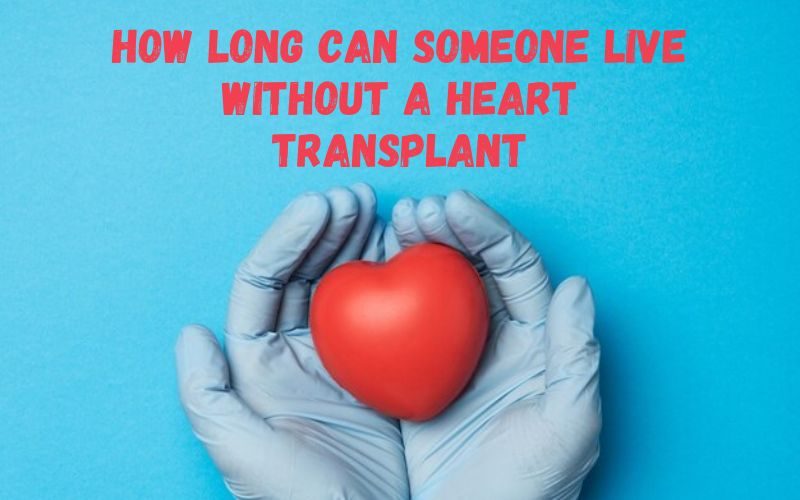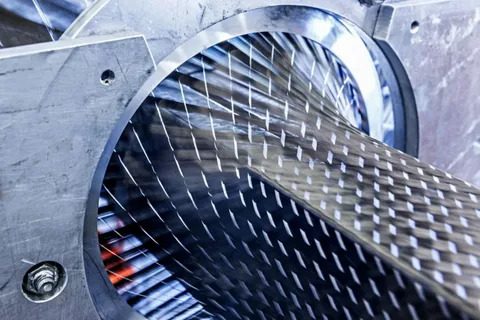The human heart is an incredibly resilient organ that works continuously to pump blood throughout the body, supplying oxygen and nutrients to organs and tissues. However, in some cases, the heart becomes weakened or damaged to the point where it can no longer function properly, and a heart transplant in India may become the recommended course of action. The question of how long someone can live without a heart transplant is complex and depends on various factors, including the cause of the heart failure, the individual’s overall health, medical management, and lifestyle factors. In this article, we will explore these aspects and try to offer a comprehensive answer to the question of how long someone can survive without a heart transplant.
Understanding Heart Failure
Before we delve into how long a person can live without a heart transplant, it’s important to understand heart failure. Heart failure occurs when the heart is unable to pump enough blood to meet the body’s needs, which can result from a variety of conditions such as coronary artery disease, high blood pressure, heart attacks, cardiomyopathy (heart muscle disease), and valvular heart disease. There are two main types of heart failure:
- Left-sided heart failure: The left side of the heart is unable to pump blood efficiently, leading to fluid accumulation in the lungs (pulmonary congestion) and shortness of breath.
- Right-sided heart failure: The right side of the heart fails, causing fluid buildup in the abdomen, legs, and feet, resulting in swelling (edema).
In both cases, the heart’s inability to pump blood effectively deprives the organs and tissues of the oxygen and nutrients they need to function properly.
Causes of End-Stage Heart Failure
End-stage heart failure refers to a point at which the heart has become so weak that it is no longer able to function without medical intervention. When heart failure reaches this stage, doctors may recommend a heart transplant. Some of the most common causes of end-stage heart failure include:
- Coronary artery disease (CAD): A buildup of plaque in the coronary arteries, leading to reduced blood flow to the heart muscle.
- Dilated cardiomyopathy: A condition in which the heart’s ability to pump blood is reduced because the heart’s main pumping chamber is enlarged and weakened.
- Ischemic cardiomyopathy: A type of heart failure caused by reduced blood flow to the heart muscle due to a previous heart attack or chronic coronary artery disease.
- Hypertrophic cardiomyopathy: A condition where the heart muscle becomes abnormally thick, which can obstruct blood flow.
- Valvular heart disease: Damaged heart valves that impede proper blood flow.
In these cases, heart failure is usually progressive, and the individual’s heart function will continue to deteriorate over time without a transplant or other forms of medical intervention.
Medical Management of End-Stage Heart Failure
In cases of end-stage heart failure, patients often rely on medical treatments and devices to manage their condition and extend their life expectancy. These treatments may include medications, lifestyle changes, and mechanical devices, which can improve heart function temporarily and delay the need for a heart transplant.
Medications: There are several medications that can help manage the symptoms of heart failure, including:
- Diuretics: To reduce fluid buildup and alleviate swelling.
- ACE inhibitors and angiotensin receptor blockers (ARBs): To lower blood pressure and reduce the heart’s workload.
- Beta-blockers: To slow the heart rate and reduce the heart’s oxygen demand.
- Aldosterone antagonists: To help remove excess sodium and fluid.
- Vasodilators: To open up blood vessels and improve blood flow.
Although these medications can provide significant relief, they are not a cure for heart failure and cannot restore the heart to normal function.
Mechanical devices: In some cases, individuals with heart failure may be fitted with devices to assist with blood flow. These include:
- Implantable cardioverter-defibrillators (ICDs): These devices monitor the heart’s rhythm and deliver shocks to correct life-threatening arrhythmias.
- Left ventricular assist devices (LVADs): These devices are implanted to help the heart pump blood. An LVAD can be used as a bridge to a heart transplant or as long-term therapy for those who are not candidates for a transplant.
While these devices can be lifesaving, they are not a permanent solution and may only provide temporary relief. The ultimate solution for patients with end-stage heart failure is often a heart transplant.
How Long Can a Person Live Without a Heart Transplant?
The length of time a person can survive without a heart transplant after developing end-stage heart failure depends on a number of variables, including:
- The severity of heart failure: The more severe the heart failure, the shorter the person’s life expectancy without a transplant. Some individuals may survive for only a few months without intervention, while others may live for years with proper medical management.
- Age and overall health: Younger individuals who are in otherwise good health may live longer with heart failure, even if they are not candidates for a transplant. In contrast, older individuals or those with additional health problems may have a shorter survival rate.
- The effectiveness of medical treatments: If medications and mechanical devices can help stabilize the heart’s function, individuals may live longer without needing a heart transplant. However, once these treatments become ineffective or if the person’s heart continues to deteriorate despite intervention, a transplant may become necessary.
- The presence of other medical conditions: Co-existing conditions such as kidney disease, diabetes, or lung disease can reduce a person’s survival prospects, regardless of heart failure treatment. These conditions can complicate the management of heart failure and make a heart transplant less viable.
- Access to a transplant: Even if a person is eligible for a heart transplant, waiting times for a donor’s heart can vary significantly. The average waiting time in the United States for a heart transplant is around six months to a year, though this can be longer depending on the availability of organs and the patient’s condition. Patients waiting for a heart transplant may be placed on a mechanical circulatory support device (like an LVAD), which can extend survival until a suitable donor is found.
Life Expectancy Without a Heart Transplant
While heart failure is a life-threatening condition, the exact life expectancy of someone without a heart transplant can vary widely. According to studies, the median survival time for individuals with end-stage heart failure is approximately 1 to 3 years, depending on the severity of the disease and the medical treatments used. Some patients may live longer with appropriate management, while others may experience a rapid decline in heart function.
In cases where heart failure is less severe or where medical interventions can provide significant relief, individuals may live for several years without requiring a heart transplant. However, for those who progress to end-stage heart failure and are unable to receive a transplant, survival is often measured in months, with the quality of life deteriorating rapidly in the final stages of the disease.
Conclusion
The question of how long someone can live without a heart transplant depends on numerous factors, including the severity of heart failure, the effectiveness of treatments, the presence of other health conditions, and the availability of a donor’s heart transplant cost. While medical advancements in heart failure management have improved the prognosis for many patients, a heart transplant remains the definitive treatment for individuals with end-stage heart failure. Without a transplant, survival time can range from months to years, depending on the individual’s specific circumstances. Ultimately, the key to prolonging life without a transplant is timely medical intervention, continuous monitoring, and, when appropriate, the use of heart-assisting devices.













